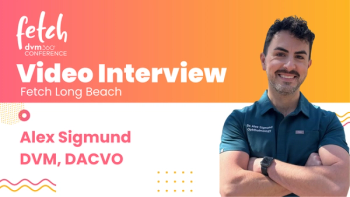
Equine infectious ulcerative keratitis uveitis (Proceedings)
Uveitis classification: any cause of blood-ocular barrier breakdown
Introduction
o Moon Blindness, Periodic Ophthalmia
o Most common cause of blindness in horses
• 2-5% of US horses
o Recurrent episodes of intraocular inflammation separated by quiescence
o What causes ERU?
• Genetic
• Environment
• Cause of initial uveitis
o Etiology debatable, but agreement that a dysregulated ocular immune response causes the disease
• Positive corticosteroid effects
• Inflammatory recurrences
• Lack of antibiotic tx success
o Unilateral vs bilateral disease
• May be either
• Recurrences may be either
• If 2+ years pass without disease in second eye, vastly reduced chance of developing disease
Uveitis Classification: any cause of blood-ocular barrier breakdown
o Primary: any etiology causing inflammation
• Trauma: blunt vs penetrating
• Infectious
√ Bacterial: Brucella, Borrelia burgdorferi, Leptospira, Rhodococcus equi, Streptococcus
√ Viral: EHV-1, EHV-2, Equine influenza, EVA, Parainfluenza type 3
√ Parasitic: Onchocerca, Strongylus, Toxoplasma
• Miscellaneous: endotoxemia, neoplasia, septicemia, tooth root abscess
o Equine Recurrent Uveitis
• Two or more episodes observed
• Two+ years w/out an episode diminishes risk
• Labeled: active / acute, quiescent, or end-stage
• Three clinical syndromes
√ Classic
• Most common
• Inflammation of iris, ciliary body, and choroid and adjacent cornea, anterior chamber, lens, vitreous, retina
• Attacks become more frequent / more severe
• Sequelae include blindness, phthisis bulbi, cataract, synechia
√ Insidious
• Low grade inflammation not outwardly painful
• Gradual destructive effect
• Draft and appaloosa breeds
√ Posterior
• Vitreous, retina, choroid and some anterior segment associated inflammation
• Blindness, vitreal cloudiness, retinal detachments
• Warmbloods, Europeans, draft breeds
Clinical Appearance
o No gender preference
o Variable clinical signs
o Over half of cases present before 12 years of age
o Anterior Segment
• Pain
• Epiphora
• Blepharospasm
• Miosis*
√ Unless dilated or synechia present
• Hypotony
√ IOP = 5 – 15 mmHg
• Aqueous flare
• Iris color change
√ Dull, rubeosis
• Corneal edema
• Deep, short perilimbal vessels common
• Fluorescein dye test – negative uptake
• Calcific band keratopathy w/chronic disease
• Uncommon – corneal cellular infiltrates, extensive neovascularization
o Posterior Segment
• Difficult to assess – anterior segment inflammation
• Vitritis (debris, murky, "glow")
• Vitreal liquefaction / floaters / traction bands
• Fundus obscured
Chronic End Stage Disease
o Posterior synechia, capsular pigment, focal / diffuse cataracts
o Lens luxation / subluxation
o Secondary glaucoma
o Retinal Detachment
o Chorioretinal scarring (peripapillary region)
• Non-tapetal area: small, circular focal depigmentation with central hyperpigmentation
• Wing-shaped hypopigmentation nasal and temporal to disc = Butterfly Lesion
DDX / Diagnostics
o Dx determined by characteristic clinical signs and historical clinical bouts
o DDX
• Corneal diseases (ulcer, abscess, foreign body, neoplasia, immune-mediated, viral)
• Non-ERUveitis
• Glaucoma
o Diagnostic tests:
• CBC/Profile
• Leptospiral serology: questionable value / tests previous exposure
• Aqueous humor / serum leptospiral serology more helpful
√ Microagglutination titers (MAT)
√ Positive C value: aqueous MAT value / serum MAT value
• Suggests intraocular production of antibodies against the organism
• Equine leukocyte antigen (ELA) typing: may help determine genetic susceptibility
• Fecal
• Lyme and EVA titer / Western blot analysis
Leptospira
o Linked to spontaneous ERU around the world
o Initial report linking leptospirosis to ERU in 1940 in Germany
o Abundant research generated since then
o Precise pathogenesis of disease (induction, role of organism in uveitis) remains poorly understood
• 1985 – UF detected AB specific to L. interrogans
• 1985 – Argentina demonstrated antigentic relationship between cornea and Leptospira, suggesting molecular mimicry
Appaloosa Horses
o Significantly higher risk: 8.3 times higher than other breeds combined
o Clinically distinct from classic ERU cases
o Often insidious course without bouts of pain
o Age of onset variable
o Secondary complications / sequelae biggest problem
o Bilateral – 80% of cases
o Glaucoma affected 21%
o Sequelae: posterior synechia, iris color change, cataracts, luxation/subluxation, vitritis, retinal detachments, phthisis bulbi, blindness
o Coat color pattern: significant finding
• Light base coats with focal darker spots**
√ Leopard pattern
• Dark base coats with light rump blanket least likely affected
o Equine MHC may play a factor in susceptibility
Medical Treatment
o Two main goals
• Reduce inflammation: corticosteroids and NSAIDs
• Reduce discomfort: mydriatic- cycloplegic
o Medication categories
• Topical steroids
√ Prednisolone acetate 1%
• Indication – potent anti-inflammatory with excellent penetration
• Dose – q 1 to 6 hours
• Risk – predisposes to corneal fungal infection
√ Dexamethasone 0.5-1.0%
• Indication – potent anti-inflammatory with excellent penetration
• Dose – q 1 to 6 hours
• Risk – predisposes to corneal fungal infection
• Topical NSAIDs
√ Flurbiprofen 0.03% / Diclofenac 0.1%
• Indication – anti-inflammatory with good penetration
• Dose – q 1 to 6 hours
• Risk – decreases corneal epithelialization
• Mydriatic – cycloplegic
√ Atropine 1%
• Indication – cycloplegic / mydriatic (minimize synechia / pain relief)
• Dose – q 6 to 24 hours
• Risk – may predispose to colic by decreasing gut motility
√ Phenylephrine 10%
• Indication – use combined with atropine; not great in horse but may provide some added help (alpha agonist)
• Systemic anti-inflammatory medications
√ Flunixin meglumine
• Indication – potent ocular anti-inflammatory
• Dose – 0.5 mg/kg PO, IV, IM x 5 days, then 0.25 mg / kg
• Risk – long term use may predispose to gastric / renal toxicity
√ Phenylbutazone
• Indication – anti-inflammatory
• Dose – 4.4 mg/kg PO, IV
• Risk- long term use may predispose to gastric / renal toxicity
√ Dexamethasone (Azium)
• Indication – potent anti-inflammatory
• Dose – 5-20 mg / day PO or 2.5 – 5.0 mg/day IM
• Risk – frequent side effects, laminitis formation so use with caution and as a last resort, taper off dose, alter management (decrease confinement, stress, starches while increasing forage and access to paddocks / pastures)
√ Prednisone
• Indication – potent anti-inflammatory
• Dose – 100-300 mg / day PO, IM
• Risk - see dexamethasone
• Subconjunctival injection
√ Trimacinolone
• Indication – potent anti-inflammatory, 7-10 day duration of action
• Dose – 1-2 mg
• Risk – severe predisposition for bacterial or fungal keratitis; cannot remove once administered
• Intravitreal antibiotic
√ Gentocin – 4 mg
• Systemic antibiotic?
√ Doxycycline - 12 mg/kg PO BID for one month
√ Enrofloxacin - 7.5 mg/kg PO QD for one month
Surgical Treatment
o Suprachoroidal cyclosporine sustained-release implants
• Constant therapeutic drug delivery to affected tissues
• By-passes some of blood-ocular barriers
• Reduces / eliminates need for regular tx by owner
• Release rates well below toxic drug levels
• Patient convenience
• Blocks transcription of IL-2 production and the responsiveness of the T-
o Rapamycin injection
Prognosis
o See chronic end-stage disease
o Corneal ulcers
o Pthisis bulbi
o Enucleation
o Poor for sight: 50-60% of ERU cases in studies experienced blindness in one or two eyes
o Appaloosas that were seropositive for Leptospirosis had the worst visual prognosis
Newsletter
From exam room tips to practice management insights, get trusted veterinary news delivered straight to your inbox—subscribe to dvm360.




